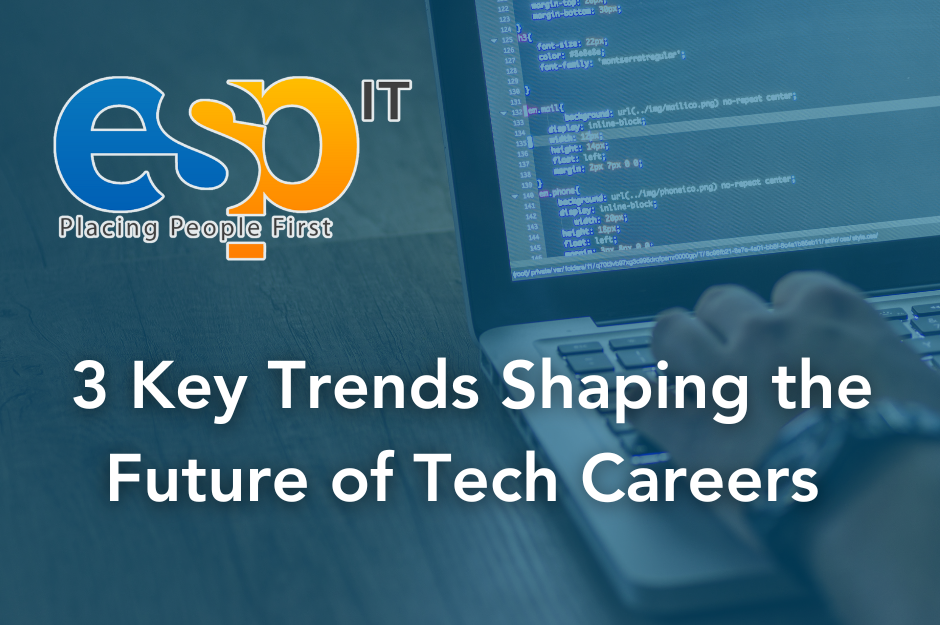In the realm of artificial intelligence (AI), there exists a fascinating subfield known as generative AI, which has been making significant strides in recent years.
Generative AI (Gen AI) uses machine learning models to create new content, such as text, images, or music. Unlike traditional AI which relies on predefined rules and patterns, Gen AI takes things a step further by analyzing massive datasets and learning the inherent patterns and structures with them. This enables it to generate entirely new content that closely resembles input data.
How Does it work:
Generative Adversarial Networks (GANs) have emerged as a leading technique within the realm of artificial intelligence, particularly in the domain of generative modeling. Comprising two neural networks—the generator and the discriminator—GANs facilitate a unique and dynamic training process characterized by a creative duel. The generator’s primary objective is to produce content that closely resembles the input data it was trained on. This content could include images, texts, or even audio samples. On the other hand, the discriminator is tasked with distinguishing between the generated content and real content sourced from the training dataset.
During the training process, the generator initially produces crude and random outputs. As the training progresses, the discriminator provides feedback to the generator, indicating how well its generated outputs resemble real data. Simultaneously, the discriminator refines its ability to differentiate between real and generated data. This constant back-and-forth interaction between the generator and the discriminator results in iterative improvements for both networks. Gradually, the generator becomes adept at producing outputs that are increasingly difficult for the discriminator to discern from real data.
The training process of GANs is iterative and adversarial, with each network striving to outperform the other. This adversarial relationship leads to the emergence of highly convincing and original content. Examples of GAN-generated content span various domains, showcasing the versatility of this approach. In the field of computer vision, GANs can generate photorealistic images of human faces, landscapes, and even artwork. In natural language processing, GANs can generate coherent and contextually relevant text passages, mimicking the writing style of a given author or genre. Moreover, GANs have been employed in music generation, producing compositions that emulate the style of renowned composers or create entirely novel musical pieces. Overall, the creative potential of GANs extends across multiple domains, offering innovative solutions for content generation and synthesis in artificial intelligence.
Modality:
Modality in the context of Generative AI refers to the type of data that a model can understand, generate, or manipulate. A model’s modality might include text, images, audio, video, or even a combination of these. For instance, a text-based model like GPT-4 operates on a single modality, text, while other models may be multimodal, combining and interpreting data from multiple sources.
In large language models such as GPT-4, modality primarily refers to the language or text modality. These models are trained on vast amounts of text data, enabling them to understand and generate human-like text based on the patterns they recognize from their training data.
GPT-4, like its predecessors, is a transformer-based model that uses a sophisticated architecture to understand the context of words and sentences, which allows it to generate contextually relevant responses. However, it remains fundamentally a unimodal model, as it specializes in handling text data.
Multimodal models can take advantage of text-based models like GPT-4 and expand upon them. For instance, if a model is trained on both text and images, it can generate image descriptions, translate between text and images, or even answer questions about an image using text.
NExT-GPT is an any-to-any multimodal LLM that can handle four different kinds of input and output: text, images, videos, and audio.
Applications for Generative AI:
As software engineering and technology professionals, you’re at the forefront of technological innovation, constantly seeking ways to enhance user experiences, streamline operations, and drive business growth. In this ever-evolving landscape, the emergence of generative artificial intelligence presents an array of exciting opportunities to revolutionize various facets of your industry. We’re already seeing this across a broad range of industries and some incredibly exciting ideas emerging from our customers.
Interactive Customer Chatbots:
Imagine integrating chatbots powered by cutting-edge Large Language Models like GPT-4 into your company’s website. These chatbots not only assist customers in real time but elevate the customization process to a whole new level. From answering queries to providing instant updates on order status, these AI-powered assistants offer a seamless and personalized customer experience. Moreover, they can transform your website into an interactive platform for product customization, engaging users in a dynamic and immersive way.
Personalized Product Recommendations:
Enhance your e-commerce platform with recommendation systems fueled by advanced Large Language Models such as ChatGPT or Google’s Gemini. These systems go beyond generic suggestions by leveraging customer preferences, past orders, and browsing history to offer tailor-made design recommendations. By harnessing the power of generative AI, you can revolutionize the way customers discover and engage with your products, fostering loyalty and satisfaction.
Automation of Quoting and Emailing System:
Imagine a quoting and emailing system that operates seamlessly, accurately, and autonomously. With the integration of Large Language Models, you can develop a sophisticated system that factors in material costs, design complexity, and production time to deliver precise and competitive quotes to your customers. This automation not only saves time and resources but also ensures consistency and reliability in your communication with clients.
Supply Chain Optimization:
Picture leveraging generative AI algorithms to optimize your supply chain and revolutionize production planning and inventory management. By forecasting demand with unprecedented accuracy and optimizing inventory levels, you can minimize costs, reduce wastage, and ensure timely delivery of products. With generative AI at the helm, your supply chain becomes a well-oiled machine, driving efficiency and competitiveness in your operations.
Drug Discovery:
Enter the realm of accelerated drug discovery with generative AI models capable of generating novel molecule structures. By expediting the identification of potential drug candidates, these models hold the promise of bringing life-saving medications to market faster. With generative AI, the future of pharmaceutical research is characterized by agility, innovation, and breakthrough discoveries.
Material Science:
Unleash the potential of generative AI in material science to design groundbreaking materials with precise properties. From lighter and stronger alloys to more efficient composites, these AI-driven designs revolutionize industries ranging from aerospace to automotive. With generative AI as your ally, the quest for superior materials becomes a journey of innovation and discovery.
Personalized Learning:
Transform education with personalized learning experiences tailored to individual learning styles and paces. By harnessing the capabilities of generative AI, educators can create adaptive and engaging educational materials that resonate with each student. From interactive tutorials to dynamic simulations, generative AI enriches the learning journey, empowering students to reach their full potential.
Conversational Shopping Experience:
Join the ranks of innovative companies like Amazon with conversational shopping experiences powered by AI. Imagine introducing Rufus, an expert shopping assistant trained in vast product catalogs and web data, to enhance the shopping journey for your customers. From answering queries to making personalized recommendations, Rufus elevates the shopping experience, driving engagement and satisfaction. With AI-driven conversational shopping, every interaction becomes an opportunity to delight customers and foster brand loyalty.
Responsible AI:
The incredible potential of generative AI is met with a pressing need for responsible development and deployment. While the capabilities of these systems are undeniable, there loom significant concerns surrounding ethical AI practices. Among these concerns are the proliferation of deepfakes, the generation of hallucinated content, biased outputs, and the potential for malicious misuse of generative AI technologies. To address these challenges and ensure that generative AI fosters positive societal impact, it is imperative for software engineers and technology professionals to prioritize transparency, explainability, and the establishment of robust ethical frameworks.
Algorithmic transparency stands as a cornerstone of responsible AI development, enabling stakeholders to understand how algorithms operate and make decisions. By shedding light on the inner workings of generative AI systems, transparency fosters trust and accountability, empowering users to scrutinize and validate algorithmic outputs. Software engineers play a pivotal role in promoting transparency by designing systems with clear documentation, and providing insights into data sources, model architectures, and decision-making processes.
Furthermore, explainability emerges as a crucial aspect of responsible AI, particularly in the context of generative models. Given the complex nature of these systems, it is essential to elucidate how they generate content and make predictions. Explainable AI techniques, such as model interpretability methods and visualization tools, offer insights into the factors influencing algorithmic outputs, facilitating comprehension and enabling users to identify biases or errors.
In addition to promoting transparency and explainability, software engineers must navigate a landscape of evolving regulatory frameworks aimed at governing AI technologies. Various jurisdictions have introduced legislation and guidelines to address the ethical implications of AI, such as the European Union’s General Data Protection Regulation (GDPR) and the Artificial Intelligence Act (AIA) (https://artificialintelligenceact.eu/the-act/). These regulatory frameworks impose requirements related to algorithmic accountability, data protection, and bias mitigation, shaping the landscape in which generative AI systems operate.
Moreover, industry-led initiatives and standards, such as the IEEE Global Initiative on Ethics of Autonomous and Intelligent Systems (https://standards.ieee.org/) and the Partnership on AI (https://partnershiponai.org), play a vital role in shaping responsible AI practices. These collaborative efforts bring together stakeholders from academia, industry, and civil society to develop ethical guidelines, best practices, and certification mechanisms for AI technologies.
Ultimately, responsible AI development demands a multifaceted approach that encompasses algorithmic transparency, explainability, and adherence to regulatory frameworks. As custodians of technology, software engineers and technology professionals have a pivotal role in ensuring that generative AI systems are developed and deployed in a manner that upholds ethical principles, promotes societal well-being, and fosters trust among users and stakeholders alike. By embracing responsible AI practices, we can harness the transformative potential of generative AI while mitigating its risks and safeguarding against potential harms.
As technology professionals explore the vast opportunities presented by emerging AI technologies, it’s evident that generative AI stands as a game-changer across industries. From interactive customer experiences to revolutionizing drug discovery, the potential for innovation and transformation is boundless. However, alongside this potential comes the responsibility to navigate the ethical complexities and ensure that generative AI is developed and deployed responsibly.
With ESP’s 55 years of experience in the Twin Cities technology community, we are committed to partnering with organizations like yours to harness the power of emerging technology to best position your team for success. Contact our team today to learn more about how we can collaborate to leverage generative AI for your organization’s success while upholding the highest quality standards. Together, let’s shape a future where AI serves as a force for good, driving innovation, progress, and positive societal impact.

This featured article is written by Seetharaman (Sam) Swaminathan.
Sam Swaminathan is a Twin Cities-based engineering leader with over 25 years of progressive industry experience. He’s led globally distributed enterprise scale engineering organizations and is passionate about immerging technology in Generative AI.
To connect with Sam and to learn more about his experience, please visit www.esp.com or reach out to us via LinkedIn.



